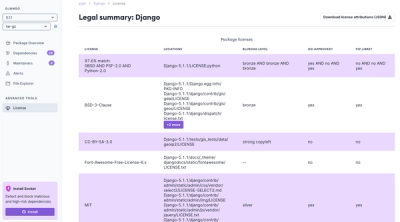
Product
Introducing Ruby Support in Socket
Socket is launching Ruby support for all users. Enhance your Rails projects with AI-powered security scans for vulnerabilities and supply chain threats. Now in Beta!
phantom is fast and reliable node wrapper for phantomjs.
var phantom = require('phantom');
phantom.create().then(function(ph) {
ph.createPage().then(function(page) {
page.open('https://stackoverflow.com/').then(function(status) {
console.log(status);
page.property('content').then(function(content) {
console.log(content);
page.close();
ph.exit();
})
})
});
});
$ npm install phantom --save
v1.0.x used to use dnode to communicate between nodejs and phantomjs. This approach raised a lot of security restrictions and did not work well when using cluster or pm2.
v2.0.x has been completely rewritten to use sysin and sysout pipes to communicate with the phantomjs process. It works out of the box with cluster and pm2. If you want to see the messages that are send try adding DEBUG=true to your execution, ie. DEBUG=true node path/to/test.js. The new code is much cleaner and simpler. PhantomJS is started with shim.js which proxies all messages to the page or phantom object.
Version 2.0.x is not backward compatible with previous versions. Most notability, method calls do not take a callback function anymore. Since node supports Promise, each of the methods return a promise. Instead of writing page.open(url, function(){}) you would have to write page.open(url).then(function(){}).
The API is much more consistent now. All properties can be read with page.property(key) and settings can be read with page.setting(key). See below for more example.
page APIThe page object that is returned with createPage is a proxy that sends all methods to phantom. Most method calls should be identical to PhantomJS API. You must remember that each method returns a Promise.
Page properties can be read using the #property(key) method.
page.property('plainText').then(function(content) {
console.log(content);
});
Page properties can be set using the #property(key, value) method.
page.property('viewportSize', {width: 800, height: 600}).then(function() {
});
When setting values, using then() is optional. But beware that the next method to phantom will block until it is ready to accept a new message.
page.settings can also be accessed via page.setting(key) or set via page.setting(key, value). Here is an example to read javascriptEnabled property.
page.setting('javascriptEnabled').then(function(value){
expect(value).toEqual(true);
});
To run the test suite, first install the dependencies, then run npm test:
$ npm install
$ npm test
This package is under development. Pull requests are welcomed. Please make sure tests are added for new functionalities and that your build does pass in TravisCI.
The current lead maintainer is Amir Raminfar
FAQs
PhantomJS integration module for NodeJS
The npm package phantom receives a total of 13,046 weekly downloads. As such, phantom popularity was classified as popular.
We found that phantom demonstrated a not healthy version release cadence and project activity because the last version was released a year ago. It has 1 open source maintainer collaborating on the project.
Did you know?

Socket for GitHub automatically highlights issues in each pull request and monitors the health of all your open source dependencies. Discover the contents of your packages and block harmful activity before you install or update your dependencies.

Product
Socket is launching Ruby support for all users. Enhance your Rails projects with AI-powered security scans for vulnerabilities and supply chain threats. Now in Beta!

Product
Ensure open-source compliance with Socket’s License Enforcement Beta. Set up your License Policy and secure your software!

Product
We're launching a new set of license analysis and compliance features for analyzing, managing, and complying with licenses across a range of supported languages and ecosystems.